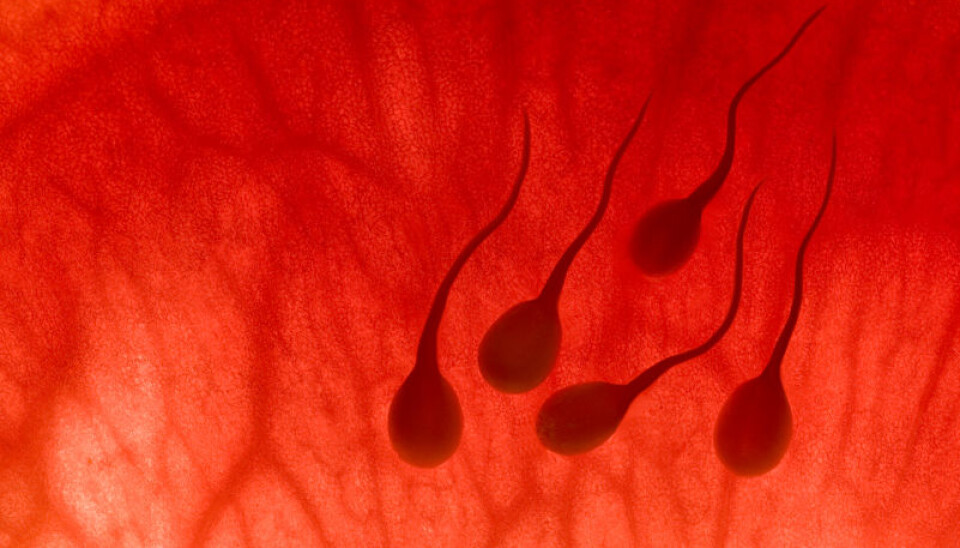
Sperm harmed by soaps and suntan lotions
Hormone disrupting chemicals in ordinary products appear to have an effect on sperm quality.
Danish and German scientists have investigated how sperm cells react to synthetic chemicals found in everyday household products such as soap, sunblock and toothpaste.
“This is the first time we have been able to prove a link between endocrine disrupting chemicals [EDCs] and negative effects on sperm cells,” says Niels E. Skakkebæk, a professor at Copenhagen University Hospital and one of the researchers behind the study.
The endocrine system steers the body’s hormone production and the researchers think these chemicals could be contributing to infertility across the industrialised world.
“It increases the indications that we shouldn’t have hormone disrupting substances in our bodies,” says Assistant Professor Torkjel M. Sandanger at the University of Tromsø, who has also conducted research on environmental toxins.
Confused sperm cells

The researchers have looked at the system in sperm cells that guides their swimming capabilities and point out that EDCs can have a big impact on spermatozoa performance
Besides impacting the locomotion of sperm cells, the control systems trigger the release of certanin enzymes used by sperm cells to penetrate the ovum.
The scientists also found out that sperm cells became less sensitive to the vital hormones progesterone and prostaglandins.
These natural hormones do the same thing as the synthetic chemicals – activate CatSper channels and coordinate the path taken by sperm cells.
Although the synthetic substances had an effect, they were much weaker than natural hormones.
But the chemicals can disturb the vulnerable process that occurs as spermatozoa swim toward the ovum.
The researchers think the sperm cells can start swimming at the wrong time, navigate out of course or fail to break through the protective ovum coating.
Soap, toothpaste and suntan lotions
The scientists investigated 96 different chemicals which have hormone disturbing properties. These are found in a wide array of industrial and consumer products.
Chemicals used in insecticides, drugstore items, plastics and personal hygiene products were investigated and 11 were thoroughly analysed.
Thirty of the 96 chemicals had a disruptive effect on sperm cells which was significant enough to represent a fertility risk, according to the researchers.
The cocktail of such chemicals can be found in various filters which are used in sunblock products.
Use of several of these substances, for instance the phthalate DBP, is already regulated because of health fears.
This is a chemical used to make plastic soft and flexible and was thus used in children’s toys for many years. DBP is now prohibited in toys in the EU because of its hormone disturbing qualities and carcinogenic properties.
Among the chemicals were also substances that have not been used in the Nordic countries for many years. These persistent organic pollutants, or POPs, are very hard to break down chemically in nature.
The highly toxic insecticide DDT was banned from agriculture in the 1960s and ‘70s, but is still in use to curb malaria some places in Africa and Latin America.
DDT accumulates in the fatty tissue of animals, including humans, and also decomposes very slowly in nature.
Unknown effect in real life
The study was conducted in a laboratory, and Torkjel M. Sandanger says the effect has only been seen in controlled conditions.
He points out that it is extremely difficult to make these studies as close to real-world conditions as possible because so many factors become uncontrollable.
“One of the problems is that the concentration of several hormone disturbing chemicals will actually vary enormous in the course of a given week. So it would be very complicated and costly to study these effects directly on people.”
“You would also have to look at the interaction between different substances and that is very hard to do in a lab study,” says Sandanger.
Nevertheless, these studies are valuable because they show an effect in human sperm cells.
“We haven’t seen the same effect in rats and mice for all these substances, so they can have various impacts from species to species. This underscores how important it is to study the effects on human beings through studies of humans,” says Sandanger.
------------
Read the Norwegian version of this article at forskning.no
Translated by: Glenn Ostling










